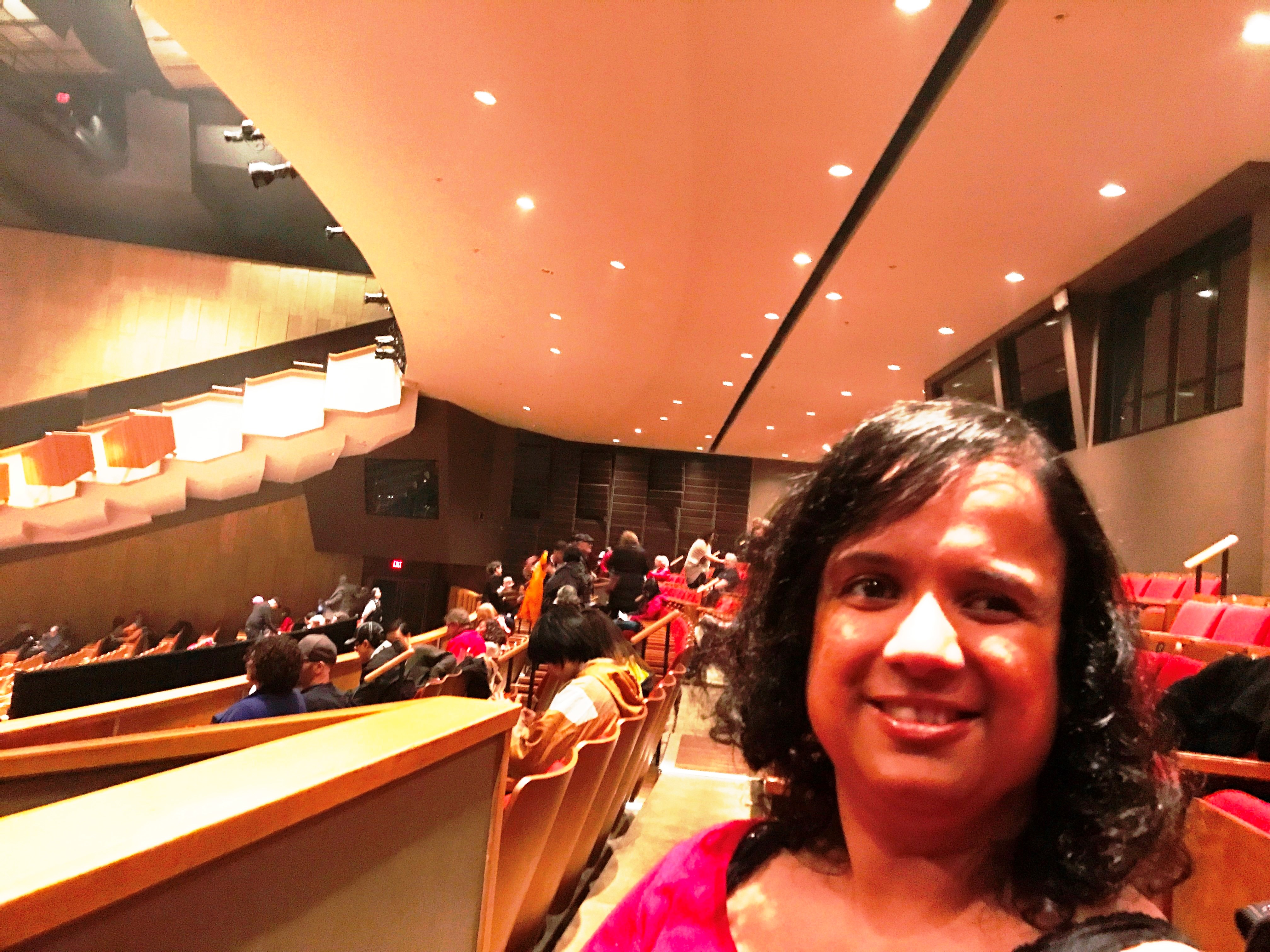Empowerment. Engagement. Authenticity.
VocalEye Review - Frontera
The stage was four stories high and 40 feet deep.
Good thing my boyfriend, Shawn, and I were seated in the mezzanine.
I have a three-inch square central field of vision in my right eye and only light perception in my left. Sitting in the front row, as I often do during described performances, would have been useless this time. I would have been lucky if I could identify a single dancer before they spun or cartwheeled or crawled or ran out of my field.
And, no, I'm not being hyperbolic with that list of movements. I've
actually omitted quite a few.
It was January 30, 2020 and Shawn and I were among a handful of people with vision loss at the Queen Elizabeth Theatre for the Western Canadian premiere of Frontera.
The rows of seats above and below us were packed and, judging by the
volume of applause throughout the performance, I'd wager the house was
sold out, or pretty close to it. As Vice Chair of
VocalEye Descriptive Arts Society, I was disappointed not to have a larger representation from the
blind and low vision community. After all, VocalEye was about to
undertake their most ambitious project yet – describing 70 minutes of
non-stop, virtually non-verbal dance.
Such a production would have once been deemed inaccessible – let's face it, inappropriate – for people with little or no vision.
Not anymore.
As we waited for the show to start, our describer, Eileen, gave us some essential background.
Finding out about The sheer enormity of the stage took my breath away. Another unusual detail, which I'd learned while writing a promotional blog post about Frontera, was that the set would be created using light alone.
Twenty-five foot vertical bars, triangular beams, solid washes of colour, strobes and flashes and lasers.
And then there were the ten dancers, dressed in either hoodies or tanks in red and black.
Against or between or under the bars, beams, strobes, flashes and lasers, these dancers would move, marking out spaces with their bodies, presenting a physical discourse on borders and surveillance, all whilst accompanied by the live rock band Fly PanAm.
I honestly don't know from where Eileen summoned the energy and vocal fortitude.
The scenes where the dancers moved like robots – in abrupt right angles and mechanical gaits – were one thing. Then the bars of light descended like a jail, evoking from each body its own primal response.
Punching. Kicking. Pushing. Attempting to flee.
Had it not been for Eileen's narration, much of the action would have been lost on me.
As it was, after the performance, my eyes felt like billiard balls too fat to land in their pockets.
The two scenes imprinted on my mind?
The first is the one where the dancers appear like victims of a capsized
ship. They are flailing, fighting each other as they try to escape deep
blue water. Their panic is tangible. So, too, is their fear and their
hostility towards those who seem to be succeeding. Then solidarity seems
to vanquish solitude and hands reach out, link, collaborate for a
rescue.
The second scene has the dancers sprawled on the floor as if dead. A cone of light, pointed at the top and wider at its base, sweeps systematically over the inert forms. Checking for survivors? Attempting to ravage or revive?
When I was asked to write a blog post about Frontera for the pUsH International Performing Arts Festival, specifically a post explaining why such a production should be described for patrons with vision loss, and why patrons with vision loss should attend the described performance, I considered Frontera's main themes of borders and surveillance.
If the production wasn't described, would that not be like erecting a border to keep certain patrons away? Conversely, if those with vision loss chose not to experience Frontera merely because it's a non-verbal dance performance, were they not confining themselves behind unnecessary borders?
I'm intrigued by the overarching metaphor in Frontera. How many bars and
beams restrict humanity by their own choosing? Are these bars and beams
all literal and legal and bureaucratic or are they only perceived, and
therefore accepted, as insurmountable?
I think of people's reactions when they see my business card for the
first time. My logo is a pink and teal butterfly wearing gold glasses,
writing 'The Kristy Corner' in pink cursive with a gold and pink quill
on scalloped teal pages.
I recall one potential employer curling up his lip at it.
"I hate pink," he said and I could see my value as a candidate dissolve.
I know I would have been a very good English Instructor to his students.
But there was also this little voice inside me scolding me for being
girly instead of professional.
That was almost ten years ago now. The majority
who see my business card are impressed by its creativity and how well it
personifies me.
As I continue to reflect and refine on the moral, ethical, personal and professional definitions of myself, I am careful to smudge and blur the edges. I've never been one to fly the banner of brown, blind woman. I am, however, a girly girl and proud of it.
In total, I am attending four shows during the pUsH Festival, three described and one recommended as low-vision friendly. The topics range from the lives of black, queer women to the quest for reconciliation, to magic realism with a sprinkle of modern-day politics through it all.
The way I look at life is you can choose to live within borders or you
can soak up as many experiences as the world has to offer. Race,
religion, ability, gender – while all gloriously liberating concepts,
can trap us in triangle beams from which we may never escape.




